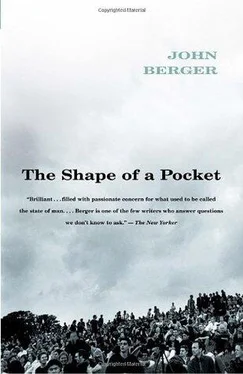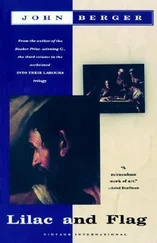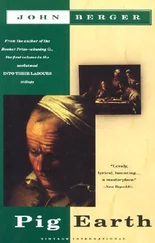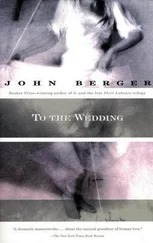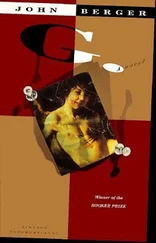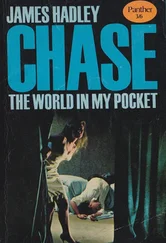All the versions show an embracing couple carved out of a single block of stone which remains very rectangular, like a pillar. Their two eyes in profile form a single eye, their four lips a single mouth. A shallow line marks the frontier of their two skins pressed together. The outermost surface of the block stands in for their four encircling arms, which end in their poor open hands, pressing the other inwards, breast to breast.
The stone now does not have to transcend its material nature. It remains earthbound, part of the same world as lichen and moss and feathers. And although these couples are recognisably by the same artist, they aspire to something very different from the rest of his work.
In face of them one encounters what came, not before the Fall, but afterwards. The stocky lovers are on this side, on our side, in all our usual mess. They are not seeking perfection; they are simply longing to be a bit more complete. Time and again with the Kisses the old rascal instilled an ache into stone: the ache of a desire for a lost unity.
Thank you again, Marisa, for your man and the lichen stuck on the coarse paper …
Michelangelo Antonioni comes from Ferrara — in the simple sense that he was born there, but also, in a more complex way, because the city or its spirit is invariably present in his work. (It seems to me that even his face and the way he is handsome is an expression of that city of Ariosto and the house of Este.)
Today a strange city of small luxuries (small in dimension, jewel-like, reminiscent of the objects in the paintings of Cosimo Tura) and great sadness. A city where young women marry and become mothers and then the mothers are inexplicably transformed into stepmothers. A city where fathers unaccountably become strangers to their children. Where nothing, however familiar, is what it appears to be, and everything becomes slowly more and more distant.
I have no right to say this, for I have never lived there, but every visit during forty years has confirmed this impression, and when I began reading the stories of Bassani, I came to the conclusion it was probably true. A city like a glass case whose panes are always misting up. Containing what? A secret. Maybe a necklace of secrets. Or maybe a weapon, if so, a cruel one.
Whoever says Ferrara, says also the River Po. Other places are more intimate with the river — Cremona, Torino, the little town of Paesana near its source, but Ferrara is its monument, its mortuary headstone. After Ferrara the river begins to negotiate and finally join the beyond. This dimension of the beyond is marvellously held at the end of Antonioni’s first nine-minute documentary film, Gente del Po , made between 1943 and 1947.
The plain of the Po has given northern Italy its wealth, but the river is unpredictable, always shifting, meandering, refusing norms. A sprawling story of regular repetitions and unpredictability. It silts up. It pushes the sea back! Its riverbed gets higher and higher — hence the everlasting danger of floods. On the surface she is still (the Po is a feminine river — perhaps the most feminine in the world: by contrast the Danube is male) but deeper down, there are invisible, ferocious currents. Beware all inexperienced boatmen! The Po irrigates, offers harvests and is indifferent, as are all rivers.
In Antonioni’s film the river is the chief character, defined by her colossal will, but not her impatience, to reach the sea. When she does, the sea, instead of embracing her, gives her a leg up and she clambers into the white bed of the sky.
The other principal characters in Gente del Po are the captain of the tugboat, hauling five barges down the river, the captain’s wife and their daughter, who is down below in her bunk for she has been taken ill. The mother goes ashore to buy a remedy for her daughter in the chemist’s shop of a poor riverside village. The tugboat is called Milano and the river constantly reminds the villagers of elsewhere. This was twenty years before Italy’s postwar economic miracle.
In Antonioni’s later films the milieu tends to be rich and elegant rather than rural proletarian. Yet isn’t it true that in most of them there is a search for a remedy? A remedy which never quite works — despite all the effort.
This first, brief, black-and-white film without spoken dialogue is prophetic in another way too. In it we today recognise Antonioni’s special way of framing his shots — as though the focus of his interest is always beside the event shown, and the protagonist is never centred, because the centre is a destiny we do not understand and whose outline is not yet clear.
Essentially his cinematic handwriting hasn’t changed since he began making this first film when he was thirty-one years old. An immense evolution is to come — including that of colour — but the same vision, the same pair of eyes was already there in 1943.
Whoever says Po, says Fog. It is part of the river’s character, like the smell of her skin. The Po was the first river — years after this film was made — on which radar was installed, for her worst fogs are impenetrable.
The fogs extend over the plain of the Po, creating a very special atmosphere and tension, which writers like Gianni Celati and, earlier, Césare Pavese have described so well.
To understand this tension one has to ask the question of what is hidden by the fog and what isn’t. In the sunlight the plain is flat and wide and long, often stretching to the horizon; the roads are straight; the farmhouses are rectangular; the poplars are in perfect line; the irrigation channels never meander. It’s impossible to imagine a less mysterious landscape. (In Holland, for example, there is always the tumult of the sky.) This lack of mystery is not, however, reassuring, for the scale of the plain and its geometry and inevitability dwarf anything that is only 2 m. high — like a man or a woman. The desert dwarfs with the authority of God; the plain of the Po dwarfs with the banality of a remorseless, regulated calendar. And so, somewhere, the soul prays for fog and it’s the only prayer to which the river listens.
The fog comes. The air gets polluted. The isolation becomes insupportable. The lorries have their headlights on, even if they pull over and stop. The claustrophobia mounts. But in the mystery of what’s behind the fog there is — nothing as simple and naive as a hope for the people of Emilia have watched everything — there is a memory, similar to the memory of a mother. (I do not think in psychoanalytic terms, and have never done so, but in climatic ones.)
I might call this memory the Madonna of the Fog. This is the most red, least mystic, least Catholic part of Italy. (Perhaps during the war she was a Partisan.) In any case everyone knows her when the visibility has been reduced to a few metres. Barely discernible, she stands there, arms extended, palms towards us, announcing that the truth is invisible (with all the ambiguity of that phrase) and that we should close our eyes in order to bring everything together!
The film that Antonioni is now making with Wim Wenders begins and finishes with a fog in Ferrara. And its provisional tide is Beyond the Clouds. After the four stories, which constitute the film, have been told, the narrator says:
We know that behind every image revealed there is another image more faithful to reality, and in the back of that image there is another, and yet another behind the last one and so on up to the true image of that absolute, mysterious reality that no one will ever see.
Those who admire Antonioni’s films often say that he narrates like a novelist. Those who criticise his films often accuse them of being abstract, over-aesthetic, formalist. It seems to me that if one wants to enter the world of his imagination, one should first think of him as a painter. Human behaviour and stories interest him, but he begins with what somebody or somewhere looks like. His most important perceptions are pre-verbal. (This is perhaps why he can use silence so well.) Kieslowski, for example, is a real novelist of the cinema because he thinks about the consequence of actions. Antonioni gazes at the silhouette of an action, with all the painter’s desire to find in it something that is timeless. I would even go so far as to suggest he often forgets the consequence.
Читать дальше
